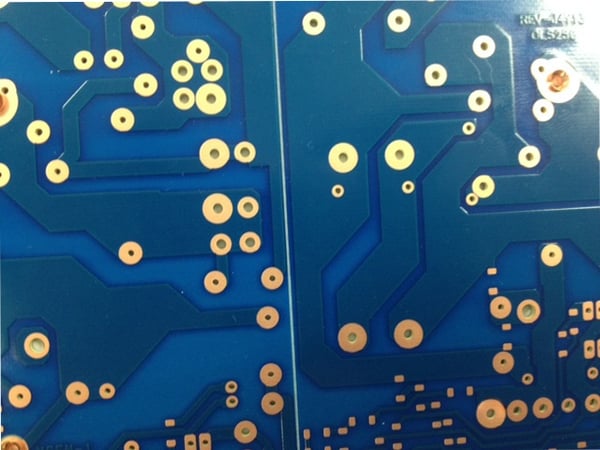It is not recommended to bake boards with an organic solderability preserve (OSP) surface finish. Although baking a printed circuit board with an organic solderability preserve finish can have negative consequences, the process itself can have positive performance in specific applications. OSP is a very thin protective layer of material placed over exposed copper, typically using a conveyorized process to protect the copper from tarnish.
Baking a board with organic solderability preserve will re-expose the copper. OSP is highly vulnerable to oxidation and can be easily removed from the pad. Baking conditions and excess handling are detrimental to OSP PCB finishes. If baking is desired, it is highly recommended that only a small section be exposed to a bake cycle first. After the bake cycle is complete then it should be tested for solderability. Only bake what will be assembled immediately; baking conditions will cause the OSP circuit board to oxidize quicker if left in storage.

PCB with Organic Solderability Preserve (OSP) Finish

Despite the risks, OSP is environmentally friendly and in most cases, superior compared to other common lead-free finishes. Other advantages include:
- Flat surface
- No Pb (lead)
- Simplistic process
- Re-workable
- Cost effective
Additional disadvantages and factors to consider include:
- No way to measure thickness
- Not good for plated through holes
- Short shelf life
- Prone to ICT issues
- Exposes Cu on final assembly
Please visit our website for more information on our printed circuit board processes.
Summary
Organic Solderability Preserve (OSP) is a cost-effective, lead-free, and environmentally friendly PCB finish that provides a flat and re-workable surface. However, baking PCBs with OSP is not recommended, as it accelerates oxidation and reduces solderability by stripping away the thin protective layer. While OSP offers many advantages over other lead-free finishes, its vulnerability to handling, storage, and thermal exposure makes it important to carefully control processing conditions and timing to maintain performance.
Key Takeaways
- Baking PCBs with OSP removes the protective coating, leaving copper exposed and prone to oxidation.
- If baking is unavoidable, only small test sections should be baked and immediately assembled after confirming solderability.
- OSP is advantageous for being flat, re-workable, environmentally friendly, and cost effective compared to other finishes.
- Limitations include a short shelf life, ICT testing challenges, poor performance in plated through holes, and difficulty measuring thickness.
- OSP is best suited for immediate assembly processes, where its protective qualities can be maximized without prolonged storage or excess handling.















